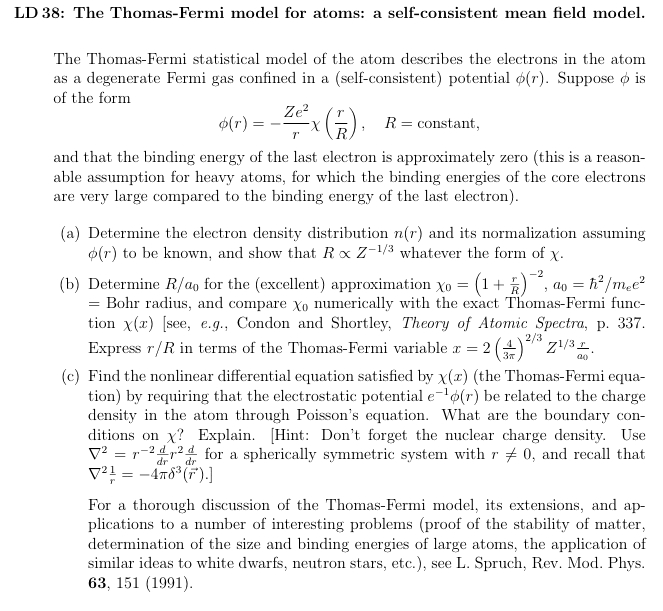
PROBLEM SET 11
Due Friday, April 28, 2006
Reading: Landau and Lifshitz, Secs. 62, 64-68, 71-72

| Comments: The result obtained here for the extremely
rapid variation of
the vapor pressure curve of a Debye solid with temperature
is fairly representative of what is observed. Thus, ice is observed to
sublime fairly fast in Wisconsin for temperatures not too far below freezing,
but stays around for a long time in the Antarctic - ask your friends on the
ICE CUBE project, which relies on having kilometers of ice at the South Pole.
The absolute temperatures are not that different (but there is
summer here). Some numbers for the vapor pressure of water vapor over ice:
|
Compare Wisconsin, average January temperature ~ 265 K, with Antarctica, 243 K on a balmy summer day. |

| Hints: Use appropriate adiabatic relations to express R in
terms of T
and integrate the Hubble relation neglecting either the radiation, or the matter and dark energy, as appropriate.
A substitution of the form y = 1/x3 will be useful in evaluating an integral in (i). In (ii), you can neglect the boundary term in the integration
corresponding to times much before nucleosynthesis when T >> 109 K. What was the approximate age of the universe at the time of crossover to a matter-dominated state?
For a complete and readable but older discussion, see S. Weinberg, The First Three Minutes (the title should suggest the magnitude of the time in (ii)), especially the mathematical supplement. A high level version which develops the necessary material is given in E.W. Kolb and M.S. Turner, The Early Universe. |

| Comments: The Thomas-Fermi model is quite good in describing the mean potential in large atoms. It misses the effects of the prominent electronic shell structure in the electron density distribution: the density n(r) is related to the second derivative of the potential, and large fluctuations in the electron density are reduced to smaller ripples in the potential. The Thomas-Fermi distribution also fails near the origin, where it does not have the correct dependence on r and should not be used in calculations which depend on the electron density for r ~ 0. One source of the problem is that there are not enough electrons near the origin to make a statistical treatment possible. The model does give the correct average scaling in the size of atoms: R is the radius typical of the bulk of the electrons, not the radius for last valence electrons which determine the chemical or solid properties of the system. |